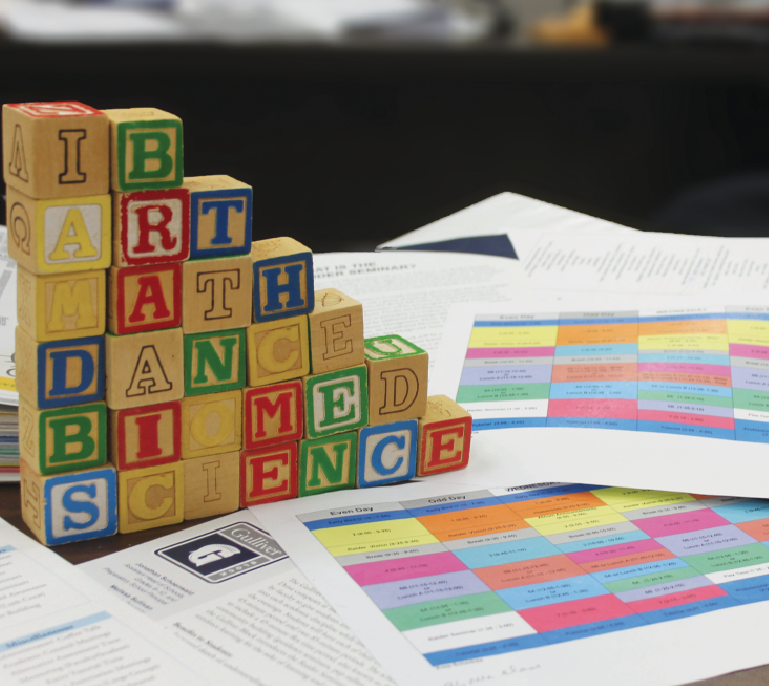Yes
Having never experienced block scheduling before and having heard daunting tales of two-hour classes, I was apprehensive about adopting the new schedule. However, a month into the school year I feel as though it has been decidedly less harrowing than I anticipated.
As a senior, the biggest perk of block scheduling is its similarity to the college schedule. Not having the same classes on a daily basis forces students to balance their time and manage their workload as they would in college. The new 80-minute classes are more similar to the length of college classes. These two factors now give students the chance to get a taste of the college format, while still taking high school level courses. Being accustomed to 45-minute classes for three years, the longer classes were difficult to get used to, but I believe that they will be great preparation for students.
Longer classes also allow for greater productivity and a more effective use of class time. In my experience, teachers are able to have students complete multiple tasks due to the extended amount of time. In science classes that are lab heavy, lengthy class periods allow for students to complete labs without having to rush to finish while still allowing time to do other activities. This is also advantageous in classes such as English and history, as time can be allotted for class discussion with the remainder reserved for other activities.
Longer class periods also allow teachers to administer a quiz or test while still having time to teach afterwards, or even briefly review with their students before the assessment. For some classes, a longer format is simply necessary, but for others, teachers have to actively attempt to keep their students engaged for a longer period of time, as it is much harder for teenagers to pay attention to an 80-minute lecture as opposed to just 45-minutes.
Much of the responsibility falls on the teachers, who must plan out their class time in order to get through the material while still keeping their students engaged for almost an hour-and-a-half. For this reason, I greatly appreciate the teachers who allow their students a break during the class, to go outside or stretch their legs, as it can be exceedingly difficult to remain seated for such a long period of time.
All things considered, I believe the new schedule has worked well, and once administration is able to work out the kinks, I am hopeful that there will be more benefits to come.
No
Although block scheduling has some benefits, I have found the overall transition into the new schedule to be unnecessarily cumbersome and, so far, the negative changes outweigh the benefits.
Problem number one:ô lunch. Before, the process of waiting in line to get food was bothersome, but manageable. The line would move rather quickly and I could get food within a few minutes and then walk to the table where I would sit every day. But with two lunch periods? The line stretches to the doors and gathers into a mass of kids near the cafeteria entrance. The rush for seats is hectic, especially considering Miamiãs inconsistent weather. There is simply not enough seating when it rains.ô During those times, I have forgone eating lunch altogether.
The second major problem:ô free time. My opinion may not be the majority, but there are certain disadvantages to the new amounts of idle time.ô The various ãflexã periods seem like a great time for students to get work done and talk to teachers.ô In practice, however, it is a time that is often lost to overcrowded rooms and general tomfoolery.ô It is difficult to find a calm area on campus to be productive.ô These mini-flexes, longer lunches, and full flex times often leave me feeling like I just want to go home and take a nap in a quiet, air-conditioned room.
The third concern with the new schedule:ô longer classes.ô One of the main reasons to switch to block scheduling is to emulate the college learning environment. In college, students sit for long lectures and then are given the freedom to work or play as they please.ô In high school, we lack the major factor that helps to ensure the success of that type of learning environment ã mobility.ô In college, you can go back to your dorm and take that nap between classes, you can go to the library across campus and read in that calm quiet cubby, or you can go get lunch early if you are feeling particularly hungry.ô In high school, you are on the campus for hours.ô Our attention spans cannot last throughout the day, so even the best classes stretch into eternity in the eyes of a tired student.
Although there are advantages to the new schedule, there is room for improvement, and it will certainly seem less foreign as the year progresses and the novelty wears off.







